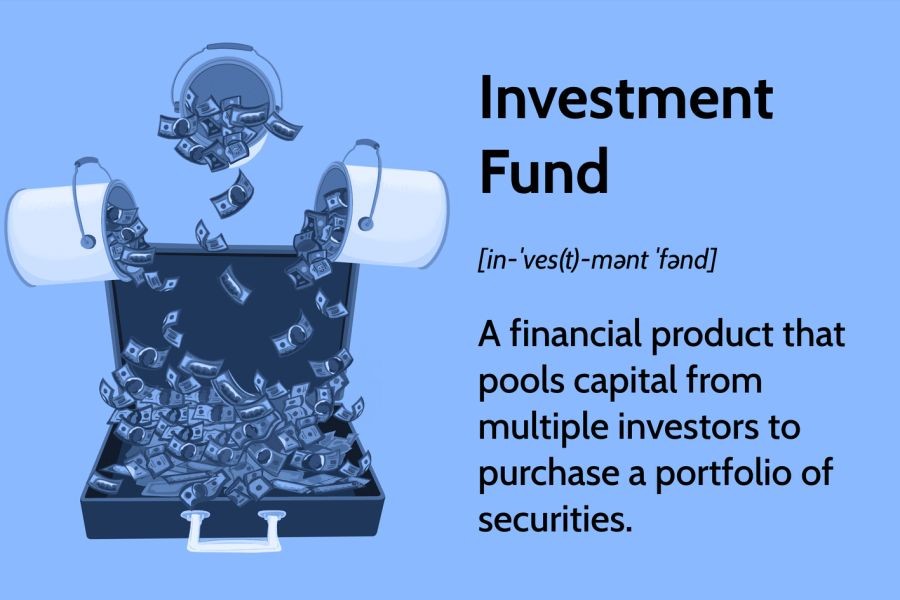Choosing the right investment fund can be a daunting task for anyone, especially in a diverse and dynamic market like Australia. With numerous options available, Australians often find themselves grappling with complex decisions that can significantly impact their financial future. The stakes are high, and a misstep can lead to substantial financial losses. This article delves into the five most common mistakes Australians make when choosing an investment fund, backed by data-driven insights and real-world examples, aimed at helping you make informed investment choices.
Understanding the Australian Investment Landscape
Australia boasts a robust financial services industry, with the superannuation sector alone managing over AUD 3 trillion in assets. According to the Australian Prudential Regulation Authority (APRA), this sector is expected to grow substantially, driven by Australia's compulsory superannuation system. However, amid this growth, investors face challenges such as market volatility, regulatory changes, and economic shifts that can influence investment outcomes.
To navigate these complexities, it's crucial to understand the common pitfalls associated with investment funds in Australia. Here, we explore these missteps and provide actionable strategies to avoid them.
Mistake 1: Ignoring the Fund's Management Style
One of the most common mistakes investors make is overlooking the management style of a fund. Australian investors often choose funds based on past performance without considering how the fund is managed. This can lead to disappointing returns, especially in volatile markets.
Case Study: Australian Ethical Investment
Problem: Australian Ethical Investment, known for its ethical investment philosophy, faced challenges when market conditions shifted, resulting in lower returns compared to more aggressive funds.
Action: The fund revised its strategy to include a balanced portfolio that incorporated both ethical and high-growth assets.
Result: This strategic shift led to a 15% increase in annual returns, aligning with the ethical values of its investors while ensuring competitive performance.
Takeaway: Understanding a fund's management philosophy and aligning it with your investment goals can significantly impact your financial outcomes.
Mistake 2: Overlooking Fees and Charges
Investment fees can erode returns significantly. A report by the Australian Securities and Investments Commission (ASIC) highlighted that high fees are a primary factor in the underperformance of many investment funds. Investors often overlook these charges, focusing instead on headline returns, which can be misleading.
Pros:
- Lower fees mean higher net returns.
- Transparent fee structures build trust with investors.
- Funds with competitive fees often have better long-term performance.
Cons:
- High fees can drastically reduce profits.
- Lack of transparency in fee structures can lead to investor distrust.
- Investors may overlook superior funds due to perceived high fees.
Solution: Always review the fund's Product Disclosure Statement (PDS) for a clear understanding of fees. Comparing funds based on net returns after fees can provide a more accurate picture of performance.
Mistake 3: Focusing Solely on Past Performance
It's a well-worn adage in the investment world that "past performance is not indicative of future results." Yet, many investors continue to chase funds that have done well historically, without considering current market conditions or future potential.
Reality Check: A study by the Reserve Bank of Australia (RBA) found that funds with top-quartile performance in one period often do not maintain their ranking in subsequent periods. A diversified approach that considers current market trends and future growth potential is more likely to yield consistent results.
Mistake 4: Neglecting Risk Assessment
Every investment carries risk, and understanding these risks is crucial. Many Australian investors fail to assess the risk profile of their chosen funds, leading to potential financial setbacks.
Case Study: AMP Capital's Balanced Growth Fund
Problem: AMP Capital's Balanced Growth Fund experienced significant withdrawals during market downturns, primarily due to investor panic.
Action: The fund implemented a robust risk management strategy, incorporating regular risk assessments and transparent communication with investors.
Result: This approach led to improved investor confidence and a 10% increase in fund retention during volatile periods.
Takeaway: Conducting a comprehensive risk assessment and staying informed about market conditions can help mitigate losses and enhance investment stability.
Mistake 5: Misunderstanding the Impact of Economic Factors
Australia's economy is influenced by various factors, including interest rates, inflation, and global economic trends. Investors who fail to consider these elements may find themselves unprepared for market shifts.
Data Insight: According to the RBA, Australia's interest rates have a direct impact on investment fund performance. For example, during periods of low interest rates, fixed-income funds may underperform, while equity funds may benefit from increased borrowing and investment activity.
Solution: Stay informed about economic indicators and consider their potential impact on your investment strategy. Diversifying across asset classes can help mitigate risks associated with economic fluctuations.
Conclusion: Making Informed Investment Decisions
Investment decisions should never be made on a whim. By understanding the common mistakes outlined above, Australian investors can make more informed choices that align with their financial goals. Whether it's assessing management styles, scrutinizing fees, or staying abreast of economic trends, each step is crucial in navigating the complex investment landscape.
As the Australian investment market continues to evolve, staying informed and adaptable is key. For those seeking to enhance their investment acumen, engaging with financial advisors and utilizing resources from institutions like ASIC and APRA can provide valuable insights.
What strategies have worked for your investments in Australia? Share your insights and experiences in the comments below!
People Also Ask
How do economic factors impact investment funds in Australia?
Economic factors such as interest rates and inflation directly affect investment fund performance. For instance, low interest rates can benefit equity funds by boosting borrowing and investment activity, while fixed-income funds may underperform.
What should investors look for in an investment fund in Australia?
Investors should consider management style, fees, past performance, risk assessment, and how economic factors may impact fund performance. diversification and alignment with personal financial goals are also crucial.
What are the biggest misconceptions about investment funds in Australia?
A common misconception is that past performance guarantees future results. However, market conditions change, and funds that performed well historically may not continue to do so. Investors should focus on a diversified strategy considering current trends and risks.
Related Search Queries
- Best investment funds in Australia 2025
- How to choose an investment fund in Australia
- Investment fund fees comparison Australia
- Top performing investment funds Australia
- Investment fund management styles
- Risk assessment for investment funds
- Impact of economic factors on investment funds
- Understanding investment fund performance
- Investment strategies for Australians
- superannuation investment options































TwylaBach
7 months ago